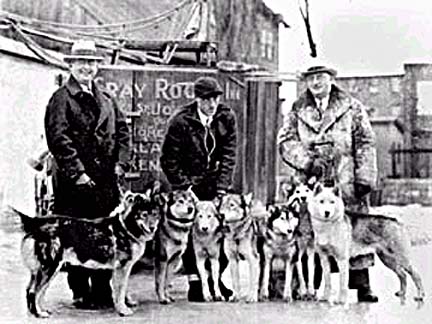
Leonard Seppala and his Siberians
Seppala Siberian Huskies
Pedigrees of our Seppalas
are at the bottom of the page

Leonard Seppala and his Siberians
Siberians are used for many purposes, pet, show, trekking, racing and more. One of the best known bloodlines for racing traces back to Leonard Seppala, and are reverently referred to as "Seppalas".
Leonard Seppala was one of the earliest kennels working with the dogs that were being imported directly from Siberia. In the early 1900's sled dog racing was becoming more popular and the "Little Siberian rats" ruled the races from the moment they first landed. At that time many people described them as being almost "foxy", or even "wolfy, but much smaller". They were usually 50 lbs or less, with thick warm fur, small prick ears, sickle tails, the innate desire to run, and ability to pull moderate loads over long distances. These speedy dogs could cover a great deal of territory efficiently, with out tiring, and eating almost nothing. They were significantly faster than the heavy freight style crossbreds that were being used at that time. During the Diphtheria epidemic in Nome, Leonard, led by Togo and Scotty, ran the longest leg (approximately 90 miles ) of the relay that brought the serum to the stricken town. From all of the many dogs and teams that ran, one lead dog, Balto, took a superhero's place in the newspapers and entered into the history books. Balto of Seppala's true story is that he was a dog Leonard considered to be of lesser quality and the dog was sent to run for another musher Gunnar Kassen hauling freight for the mining company that employed the two men.. Balto ran the last, and shortest leg (50 miles), through horrible weather, into main street Nome. Kassen and Balto became heroes, but with the growth in popularity of dogsled racing Leonard Seppala's Siberian Huskies became world famous.
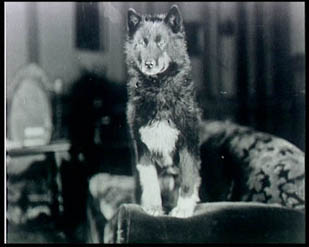 |
Leonard Seppala's dog famed Balto, the
leader of the last team in the relay that brought the Diphtheria serum to Nome |
Kassen, Balto and the team toured the US for a few years, the team finally retiering on public display at a zoo. Leonard took his dogs and began racing in the lower states and with Togo he toured the US. Eventually Seppala finally returned to his Alaska and beloved dogs and continued on sledding and breeding the best racing huskies of their time. Eventually Leonard's dogs were found in many kennels, but it was in Harry Wheeler's "Of Seppala" kennels in St. Jovite Station, Quebec, that the line progressed in possibly it's purest form.
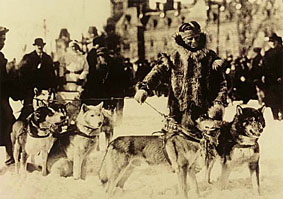
Leonard Seppala in a 1913 race
Many breeders today proudly trace their lines to Seppala bloodlines. It is very common to see "Sepp" as part of their kennel names. The claim to have pure, or even strong, "Seppala bloodlines" is not always truly accurate. In the 1990's a movement grew in Canada's Yukon to "locate and rescue" the pure Seppala bloodline. A registry for the "Seppala Sleddog Project" was developed to help identify and preserve the historic genome. Shortly there after another group in the USA approached the newly formed Continental Kennel Club to register the "Seppala Siberian Sleddog" as a breed separate from the Siberian Husky, and to allow the increase of the gene pool with an open registry.
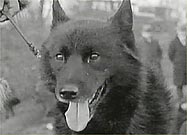
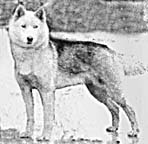
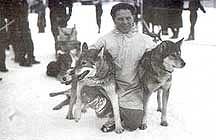
Balto
the beautiful Kree Vanka
Seppala and his dogs
The dogs of Leonard Seppalas kennel do not resemble most of the dogs referred to as racing "Seppalas" Today's races are run under very different conditions where the largest weather problem is heat, not the cold, and they are run on groomed trails, without loads, at much faster speeds. These modern "Seppalas" are generally much shorter coated, longer legged, finer boned, and they have a different, longer, narrower head type lacking the large sinus cavities for warming Arctic air (thus the lack of stop in many modern Seppalas). They also tend to have significantly larger ears and narrower chests/bodies. The saying "Form Follows Function" is certainly at work with the changes in style of racing, and thusly changes in the phenotypic look of the Seppala Siberian Husky bloodline. The original dogs brought over from Siberia were used for hauling and moving quickly from place to place with loads, but never racing. The wonderful array of colors and markings, now all but missing in the "show" style Siberian, are still present in the modern Seppala. However the Irish Pattern markings most people think of as "traditional" or "typical" Siberian markings is rapidly disappearing in the Seppala lines with some breeders disliking certain colors or markings because they are reminiscent colors or markings common to "show style" dogs. This is unfortunate as color and markings have no bearing on how well a dog works. The modern Seppala racing sled dog is highly valued for its ability to speed race. Touring, sprint, mid-distance, long-distance and recreational sledding are all strongholds of the Seppala. Regardless of what fraction the observer, or owner, is from, the ability and athleticism of these dynamic dogs is unmistakable.
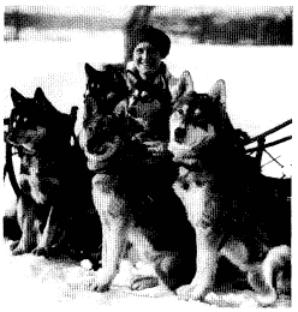
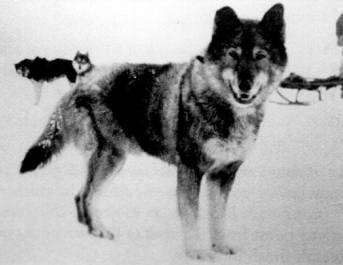
Ricker with Surgut, Mukluk, and Sapsuk
Togo
Pedigrees of
Our Seppalas
~ Flower ~ Ember ~ Alley ~ Ultra ~ Eden and Escalade ~ Lakota (Bud) ~ Duska ~
Pure Seppala breedings are planned for
2004 and 2005
Combining the best of Seppala bloodlines,
continuing Canadian Kennel Club and Continental Kennel Club registration
The dogs of Balto's team were Billie, Tillie, Old Moctoc, Fox, Sye and Alaska Slim.